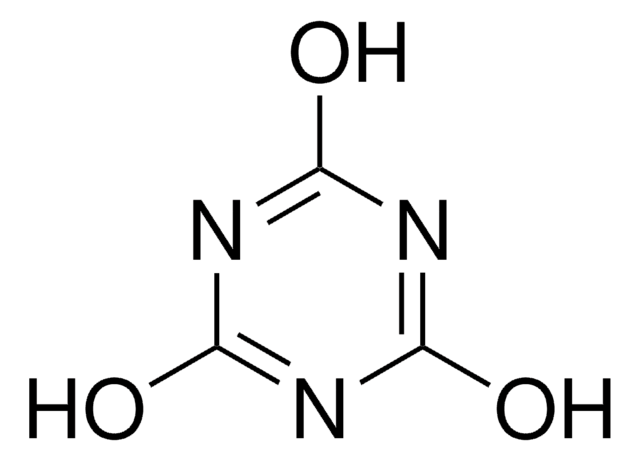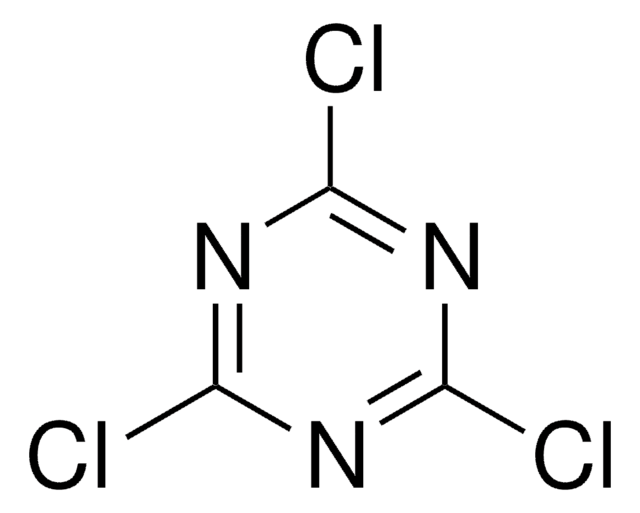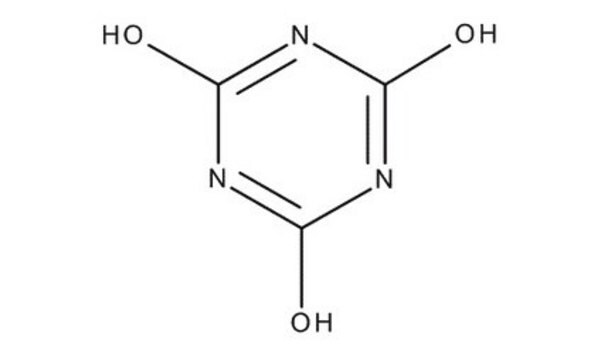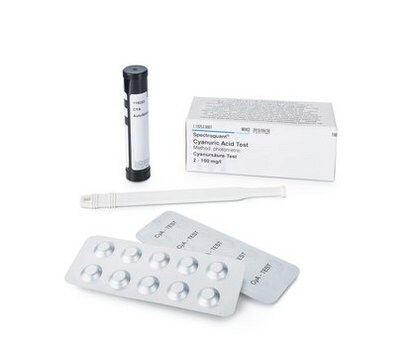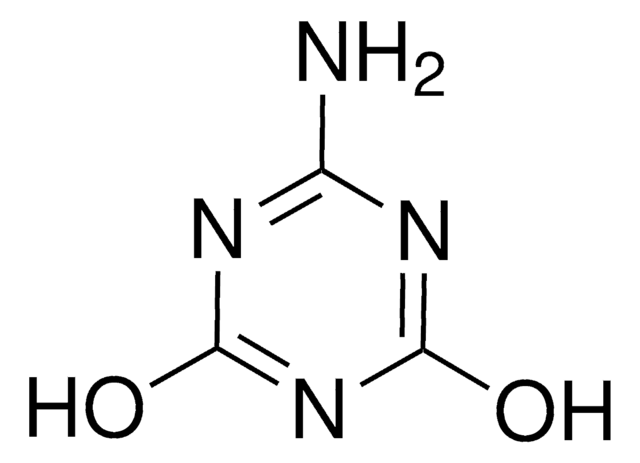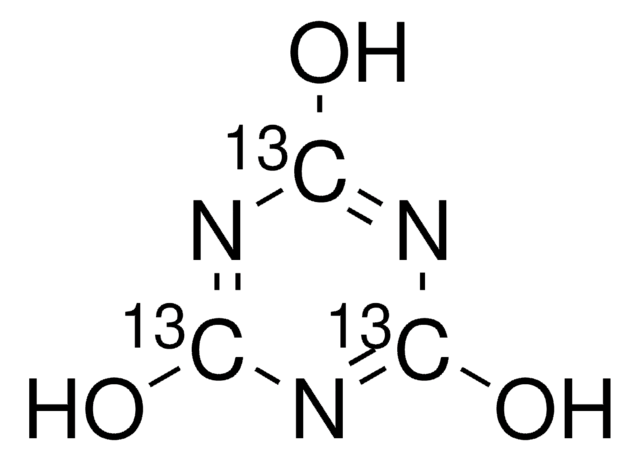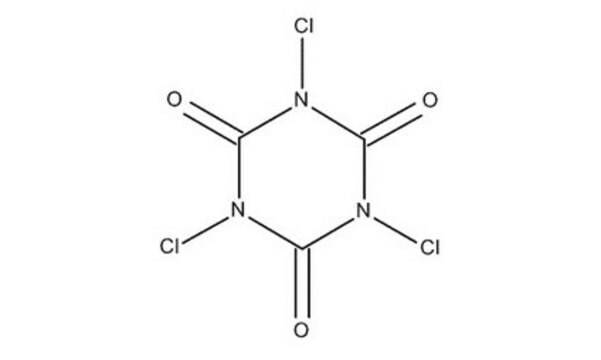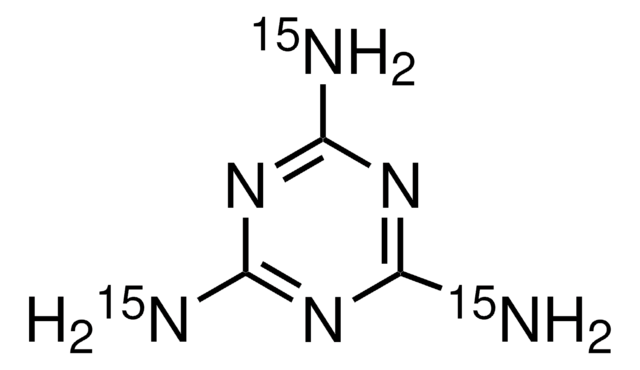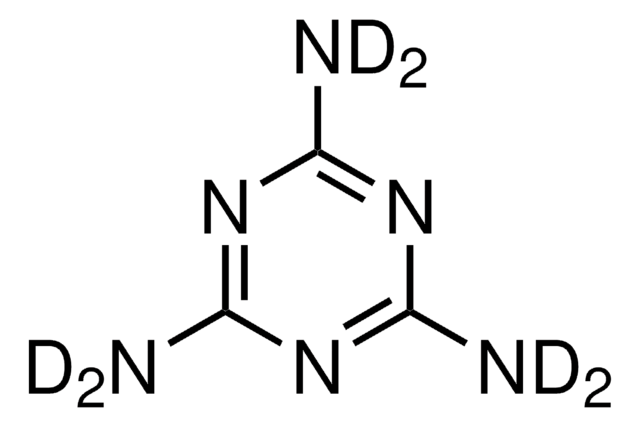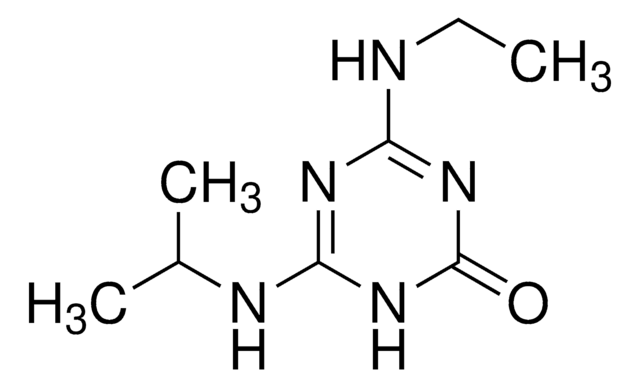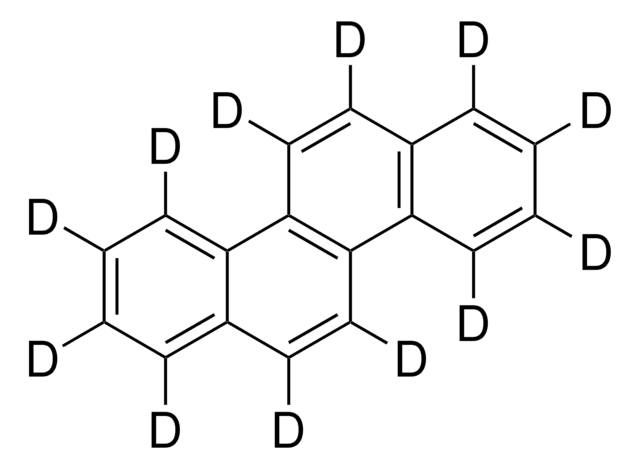16614
Cyanuric acid
analytical standard
Sinônimo(s):
1,3,5-Triazine-2,4,6-triol, 2,4,6-Trihydroxy-1,3,5-triazine
About This Item
Produtos recomendados
grau
analytical standard
Nível de qualidade
Ensaio
≥98.0% (GC)
prazo de validade
limited shelf life, expiry date on the label
técnica(s)
HPLC: suitable
gas chromatography (GC): suitable
pf
>360 °C (lit.)
aplicação(ões)
cleaning products
cosmetics
food and beverages
personal care
Formato
neat
cadeia de caracteres SMILES
O=C1NC(=O)NC(=O)N1
InChI
1S/C3H3N3O3/c7-1-4-2(8)6-3(9)5-1/h(H3,4,5,6,7,8,9)
chave InChI
ZFSLODLOARCGLH-UHFFFAOYSA-N
Procurando produtos similares? Visita Guia de comparação de produtos
Descrição geral
Aplicação
- Milk and milk products using gas chromatography with tandem mass spectrometric (GC-MS/MS) detection.
- Human urine samples and infant formula using liquid chromatography coupled to tandem mass spectrometry (LC-MS/MS).
Embalagem
produto relacionado
Código de classe de armazenamento
13 - Non Combustible Solids
Classe de risco de água (WGK)
WGK 1
Ponto de fulgor (°F)
Not applicable
Ponto de fulgor (°C)
Not applicable
Equipamento de proteção individual
dust mask type N95 (US), Eyeshields, Gloves
Escolha uma das versões mais recentes:
Certificados de análise (COA)
Não está vendo a versão correta?
Se precisar de uma versão específica, você pode procurar um certificado específico pelo número do lote ou da remessa.
Já possui este produto?
Encontre a documentação dos produtos que você adquiriu recentemente na biblioteca de documentos.
Os clientes também visualizaram
Nossa equipe de cientistas tem experiência em todas as áreas de pesquisa, incluindo Life Sciences, ciência de materiais, síntese química, cromatografia, química analítica e muitas outras.
Entre em contato com a assistência técnica